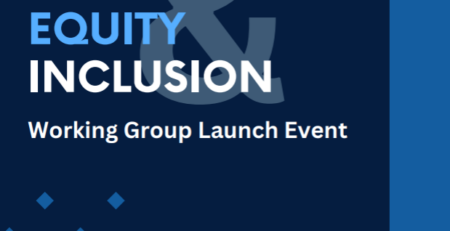Report Summary: DCF launches new report focusing on Advanced Connectivity Take-Up and Use Cases
On Tuesday 19th March, the Digital Connectivity Forum launched its latest report, ‘Advanced Connectivity Take-Up and Use Cases’, produced by leading TMT Management consultancy, Analysys Mason.
The Report
The report considers drivers, barriers, and potential applications of advanced broadband technologies, as well as potential policy interventions and support for the enablement of advanced connectivity for all.
A key recommendation was the implementation of an information campaign centred around a new cross-industry independent website. By offering clear, accessible explanations of the various broadband technologies and their capabilities to consumers, the aim is to provide clarity to consumers, allowing them to understand and choose the right service for their needs.
Alongside take-up and barriers the report considers use cases for 5GSA and FTTP connectivity. Considering critical sectors such as agriculture, transport, healthcare, and manufacturing. These use cases cover a broad range of areas within these topics, highlighting the potential for transformative impact across society. These include:
- virtual coupling of trains
- connected ambulances
- advanced agricultural techniques like crop phenotyping
To realise these promising use cases, the report advocates for increased trialling of advanced connectivity solutions, alongside proactive government promotion and feasibility assessments aimed at addressing regulatory, operational, and safety challenges.
You can read the full reports by clicking here for take up and here for use cases.
The Launch
Our launch commenced with opening comments from Head of the DCF, Alex Mather before handing over to Principal Consultant with Analysys Mason, Andrew Daly.
Andrew gave two presentations over the course of the afternoon, looking at both the take up and the use case elements. These included results from the 22 surveyed FTTP providers on:
- Network coverage and take-up
- drivers and success stories
- barriers and policy initiatives
As well as contextual information such as whether they are urban/rural in focus, a wholesale/retail operator, as well as their scale.
The survey found that the top three drivers listed by operators were:
- Download speed
- Price
- Reliability
The main barriers identified by respondents included a perception that their current broadband is sufficient, as well as low awareness of the capability of FTTP. Consumers’ existing broadband contracts were also cited by operators as a barrier. However, it should be noted that contracts are a feature of the UK market which help with revenue assurance and investment recovery.
Andrew highlighted that the survey found that operators had expressed support for information campaigns as the most effective policy option to encourage FTTP take-up.
He then outlined the report’s key recommendation: an information campaign built around a new cross-industry independent website. He added that this website could incorporate
- non-jargon explanations covering the full range of broadband technologies (including benefits and capabilities)
- use of visuals or graphics where possible to encourage better understanding (for example how the availability of networks will change in the future)
- Information on how to switch providers (for example the OTS regime)
- Information on digital skills training and digital champions.
Andrew then moved onto the second part of the report on use cases, that utilise the capabilities of advanced connectivity networks. Highlighting the benefits that these could provide.
These covered both 5G standalone (5G SA) and Fibre to the Premises (FTTP). The use cases that were identified were noted for their clear benefits, short to medium term time scale and lack of clear alternative approach. An additional focus was that of having a clear commercial and/or policy rationale underpinning them.
In total six use cases were identified for inclusion within the report:
- Remote health monitoring
- Connected ambulances
- Advanced connectivity in railways
- Electric vehicle charging
- Remote monitoring of industrial equipment
- Crop phenotyping
Examples of benefits within these included wearables and in-home sensors to provide patient monitoring, automatic uplink of healthcare visitor data, remote video consultation allowing for less mobile, or more remote, patients better access to prompt, quality care.
The report estimates a potential 5% social care saving (representative of £890 million).
Other highlighted uses included vibration, electrical and other types of sensor monitoring within machinery to increase efficiency in manufacturing. This sensor data could be utilised to detect patterns which indicate wear, as well as mitigating possible future failure.
This advance knowledge could support preventative maintenance, minimising downtime. Network reliability was noted as a key element of changing industrial processes, meaning that the reliability presented by FTTP is of critical importance within this transformation.
Following Andrew’s presentations, the DCF were delighted to welcome two panels of expert voices to the stage to discuss each half of the report’s findings in detail. The panels were chaired by DCF chair, Stephanie Liston and featured:
- Jesam Eyong, Head of Public Sector Engagement, Barrier Busting Task Force, DSIT
- Richard Feasey, Inquiry Chair, Competition and Markets Authority
- James King, Policy Principal, Ofcom
- Bronagh McCloskey, Head of Public Affairs and Corporate Sustainable Responsibility, TalkTalk
Discussing Advanced Connectivity Take-Up and covering their thoughts on the identified drivers and barriers towards adoption and how providers and industry can come together to remove or improve these; as well as their thoughts on the overall call for a cross industry website/information campaign.
Joining the use cases panel we were very happy to welcome:
- Andrew Daly, Principal Consultant, Analysys Mason
- Patricia Dooley, Head of UK Strategy and Public Affairs, Ericsson
- Jonathan Freeman, Strategic Growth and Regulatory Director, Cellnex UK
- Chris Parkinson, Senior Government Affairs Manager, Vodafone
The audience heard the panel’s views on how far away they feel we are from seeing these use cases translated into reality, as well as what they see as the key enabler in bringing these use cases to fruition. The panel noted the relevance of the report’s findings as we approach almost one year on from the publication of the Government’s Wireless Infrastructure Strategy.
The event concluded with closing remarks from DCF chair, Stephanie Liston before networking drinks.
We hope you enjoyed the launch, if you were not able to join us but have any questions regarding the report, please contact us.





